There’s a certain rhythm to life in the bush — one that can’t be rushed or predicted. And for many guests at Shumbalala Game Lodge, the most meaningful moments aren’t always the ones that make it onto Instagram. A real safari is about more than ticking animals off a list. It’s about the process — the waiting, the watching, the wondering.
Revealing the Hidden Language of the Bush
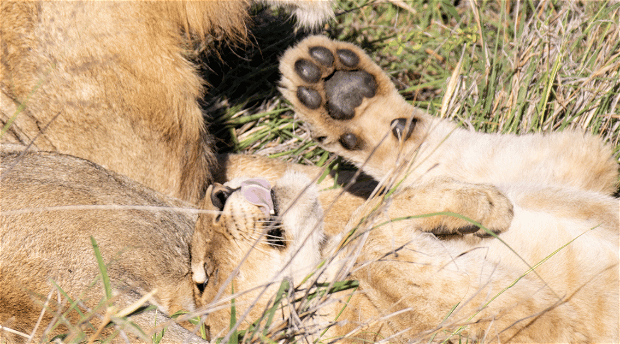
When you set off on a safari with Shumbalala Game Lodge in the heart of Thornybush Private Nature Reserve, you enter a realm where every sight and sound tells a story. You might wonder how our skilled guides and trackers seem to magically reveal incredible wildlife - it isn't down to sheer luck! It's a nuanced art form - a dialogue with nature that we are excited to share with you.
As they guide you through the reserve, our experts read the landscape like an open book, identifying marks, sounds, and even scents that signal the presence of nearby animals. This is the hidden language of the wild - a subtle and complex system of signs and symbols usually unnoticed by travellers. What sets a safari at Shumbalala Game Lodge apart is your opportunity to not only experience incredible wildlife sightings, but also learn the language that tells us where and how to find them.
To give you a head start for your next safari, we've compiled a guide on some of the most common animal tracks you're likely to encounter. Read on as we delve into the intriguing world of animal tracking.
Lion Tracks
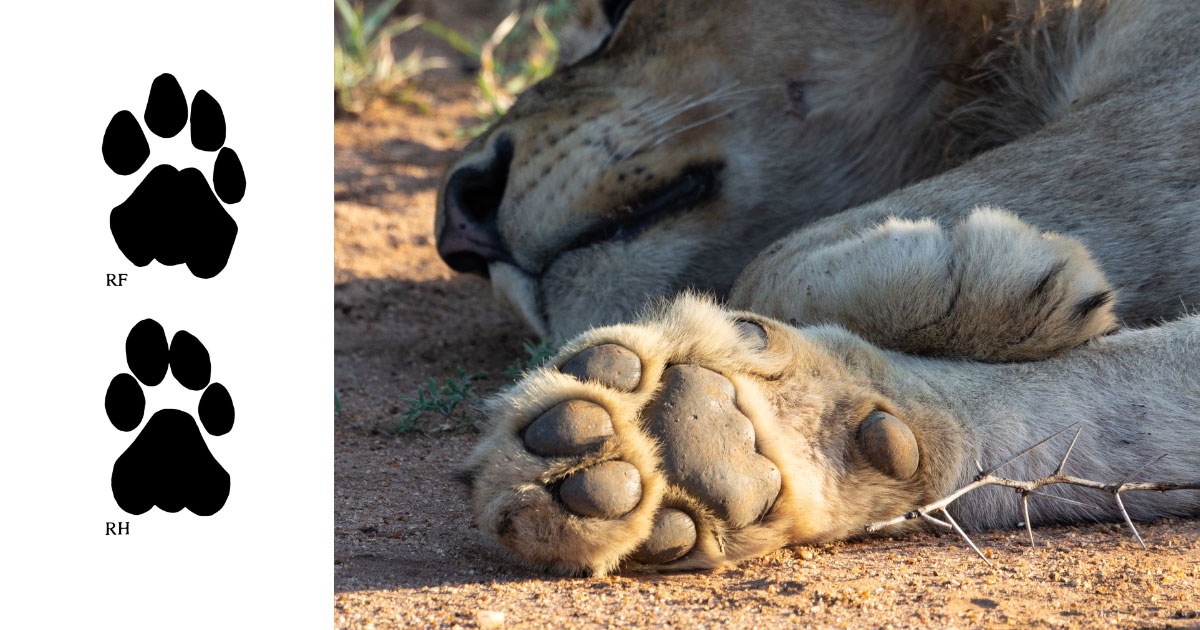
- Description: Lionpaw prints are symmetrical with four toe prints and a larger three-lobed pad at the bottom.
- Fun Fact: Male lion tracks are usually larger than female tracks.
- Tracking Tip: Look for nearby drag marks, which could indicate a recent kill.
Elephant Tracks

- Description: Large, oval-shaped indentations.
- Fun Fact: Elephants have unique "fingerprints"—no two footprints are identical.
- Tracking Tip: Fresh elephant dung can indicate recent passage.
Leopard Tracks
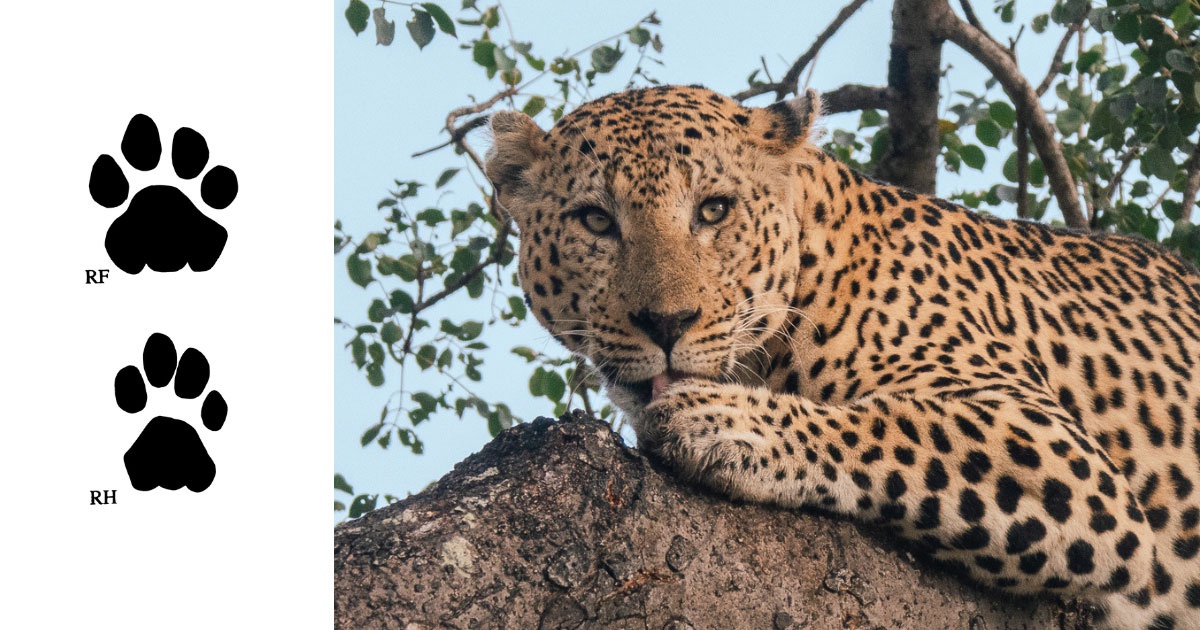
- Description: Similar to lion tracks but smaller, often with more space between the toe pads and the main pad.
- Fun Fact: Leopards often walk in a more "direct register" to conserve energy.
- Tracking Tip: Check trees; leopards often hoist their kills into branches.
Buffalo Tracks
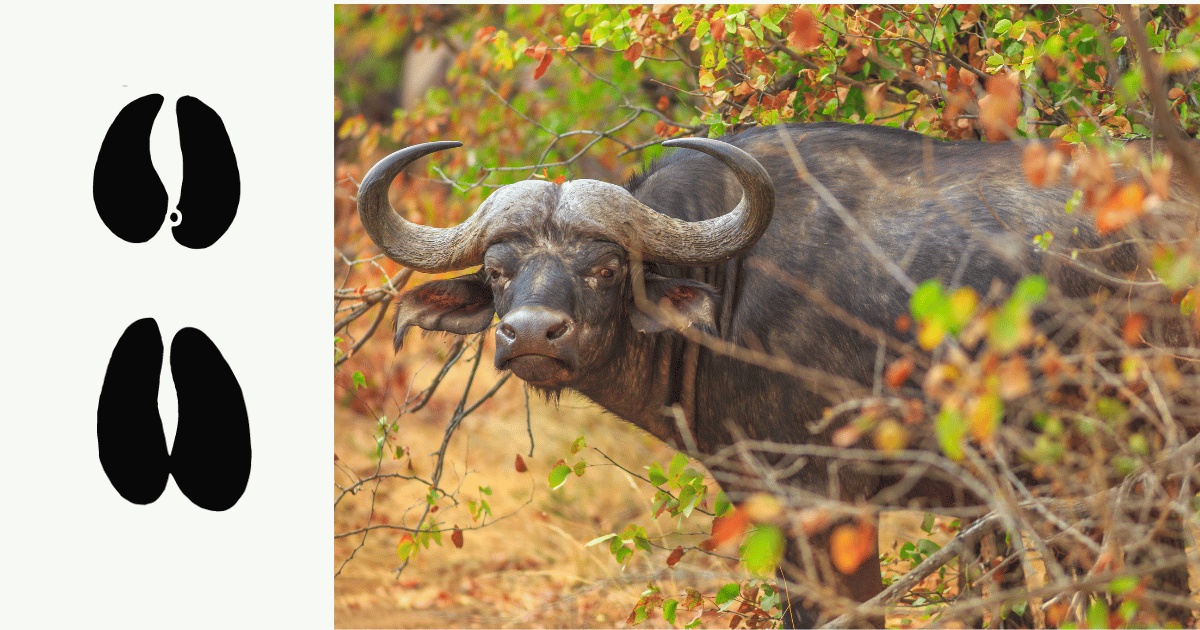
- Description: Resemble cow tracks but are more spread out.
- Fun Fact: Buffaloes usually move in herds, so you'll often see their tracks in large groups.
- Tracking Tip: Keep an eye out for wallows - muddy depressions near water sources where buffaloes often roll to cool down and protect their skin from insects.
Rhino Tracks
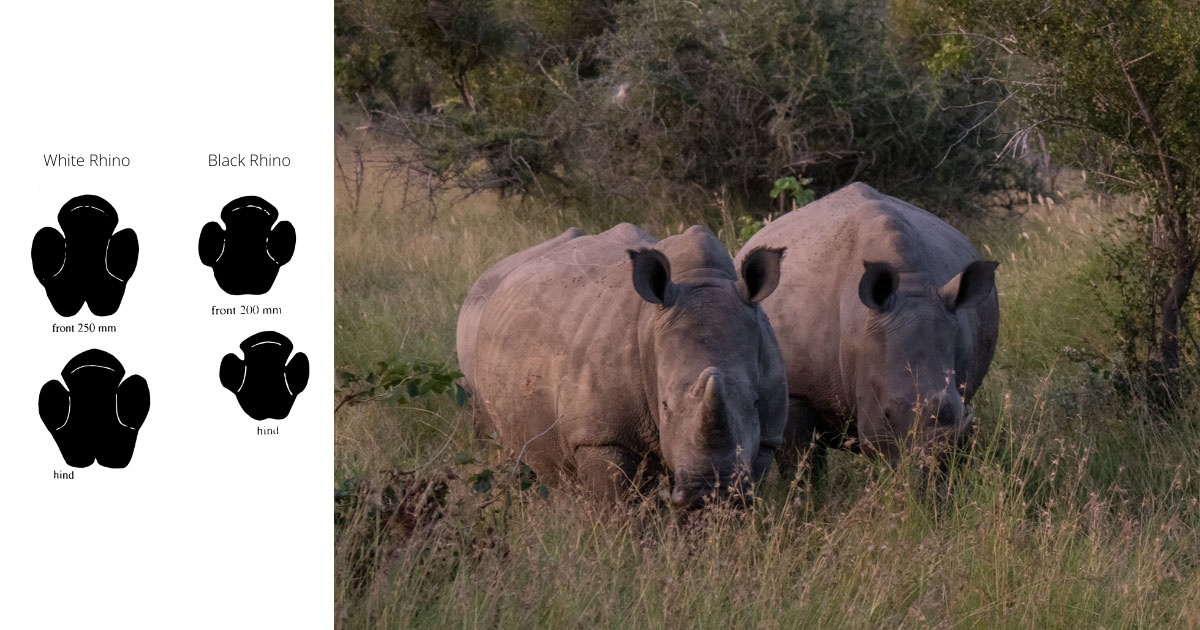
- Description: Large, oval tracks with three toes.
- Fun Fact: Black and white rhinos have differently shaped tracks.
- Tracking Tip: Look for nearby "middens" (dung piles) that rhinos use for communication.
Zebra Tracks
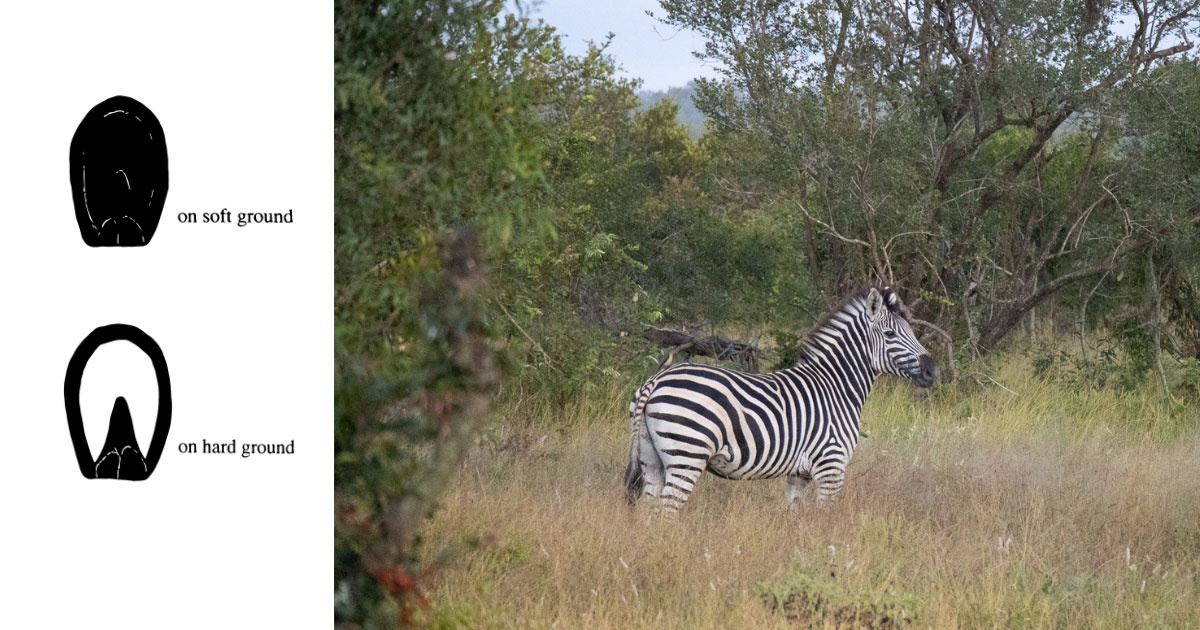
- Description: Similar to horse tracks but often more "squared."
- Fun Fact: Zebras often zig-zag as they walk.
- Tracking Tip: Zebra tracks often appear in multiples due to their herd nature.
Giraffe Tracks
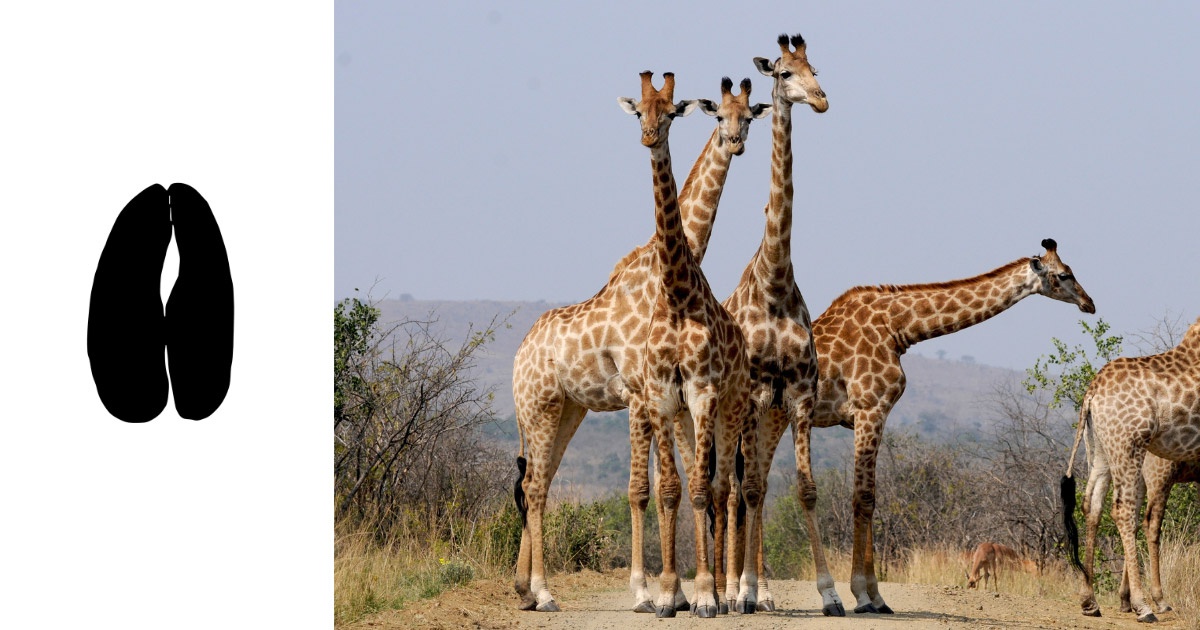
- Description: Elongated, resembling the tracks of a large deer.
- Fun Fact: Due to their large size, adult giraffe tracks are unmistakable.
- Tracking Tip: Look up for broken or nibbled leaves higher in the tree line.
Hippopotamus Tracks
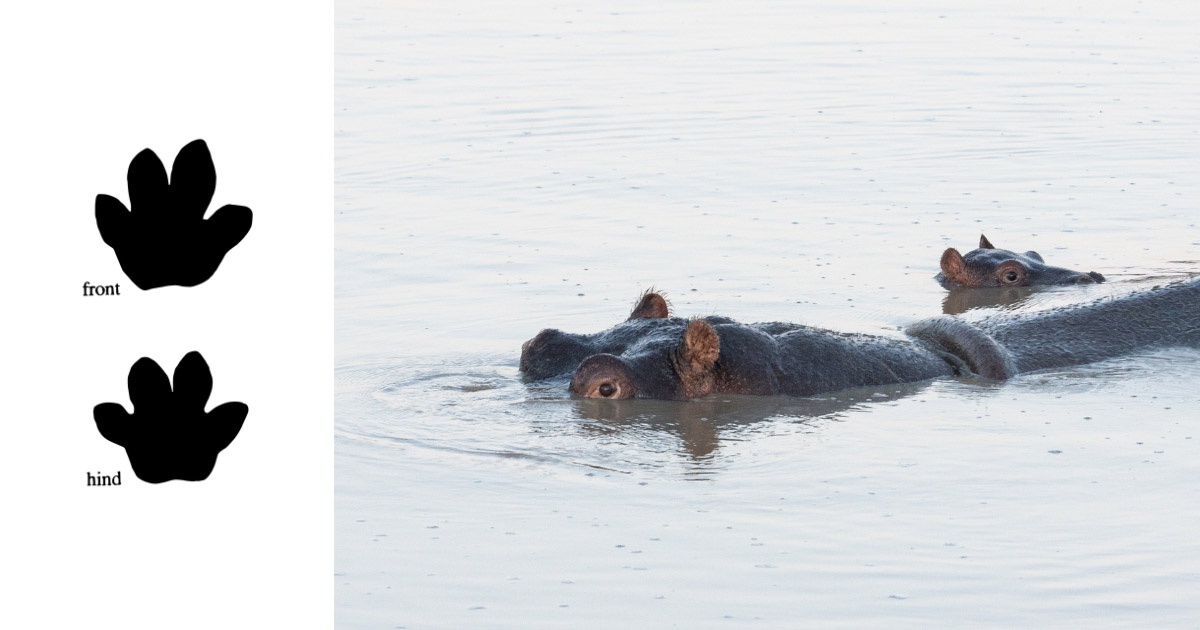
- Description: Huge, four-toed prints with webbing between the toes.
- Fun Fact: Despite their size, hippos can move quickly.
- Tracking Tip: Hippos usually venture out of the water in the late afternoon to feed on grass and return to their aquatic habitats in the early morning. If you notice fresh tracks leading away from a water source in the evening or back to it in the morning, you're likely on the trail of a hippo.
Top Tip:
One of the joys of a safari at Shumbalala Game Lodge is the pure delight our guides and trackers find in sharing their expertise. They thrive on your curiosity, so don't hold back. Ask questions, be inquisitive, and engage. You won't just make their day—you'll deepen your own understanding of the wilderness.
We hope this guide has ignited a spark of curiosity to enrich your next safari adventure with us. We can't wait to explore, discover, and learn alongside you, deciphering nature's secret messages one track at a time. Until then, happy tracking!
Further Reading
If you’re planning your honeymoon and find yourself torn between golden beaches and something a little different, you’re not alone. The beach is a classic choice — but we’re here to let you in on a little secret: A honeymoon in the bush is something magical. And at Shumbalala Game Lodge, in the heart of the Thornybush Private Nature Reserve, it might just be the most romantic escape you never knew you...
At Shumbalala Game Lodge, some mornings come with coffee and a view. Others come with coffee and elephants. You never quite know which — and that’s part of the magic. The birds are calling, the air is crisp, and the day begins slowly, just as it should in the bush. Then, through the thickets, the unmistakable sound of movement. A soft crackle of leaves, the low rustle of branches — and then,...


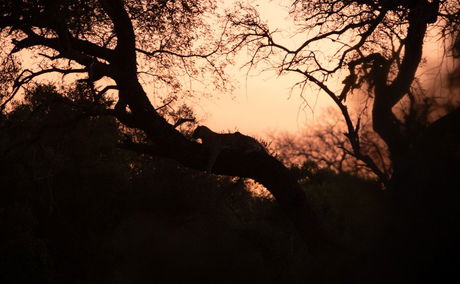

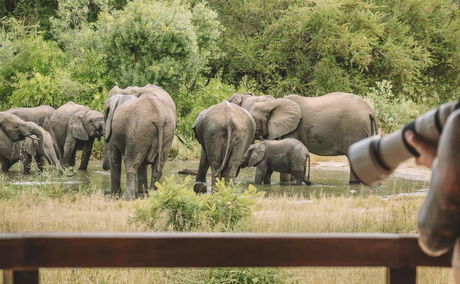
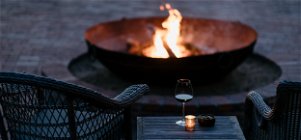

Share This Post